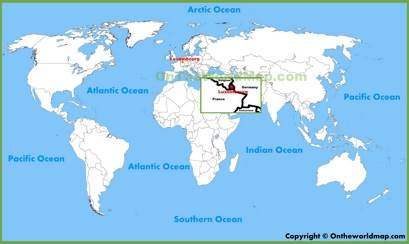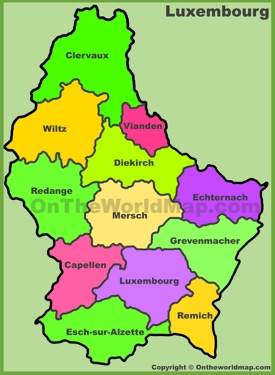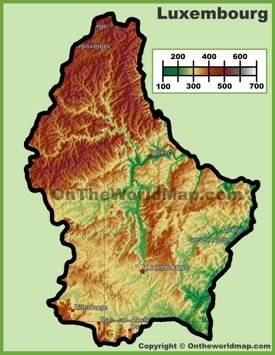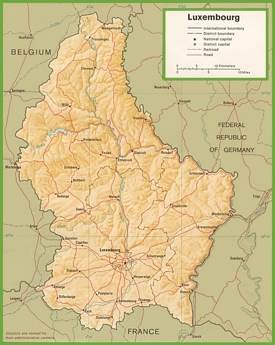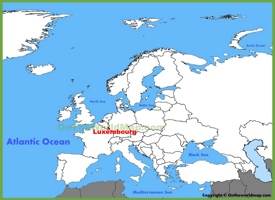Luxembourg Map
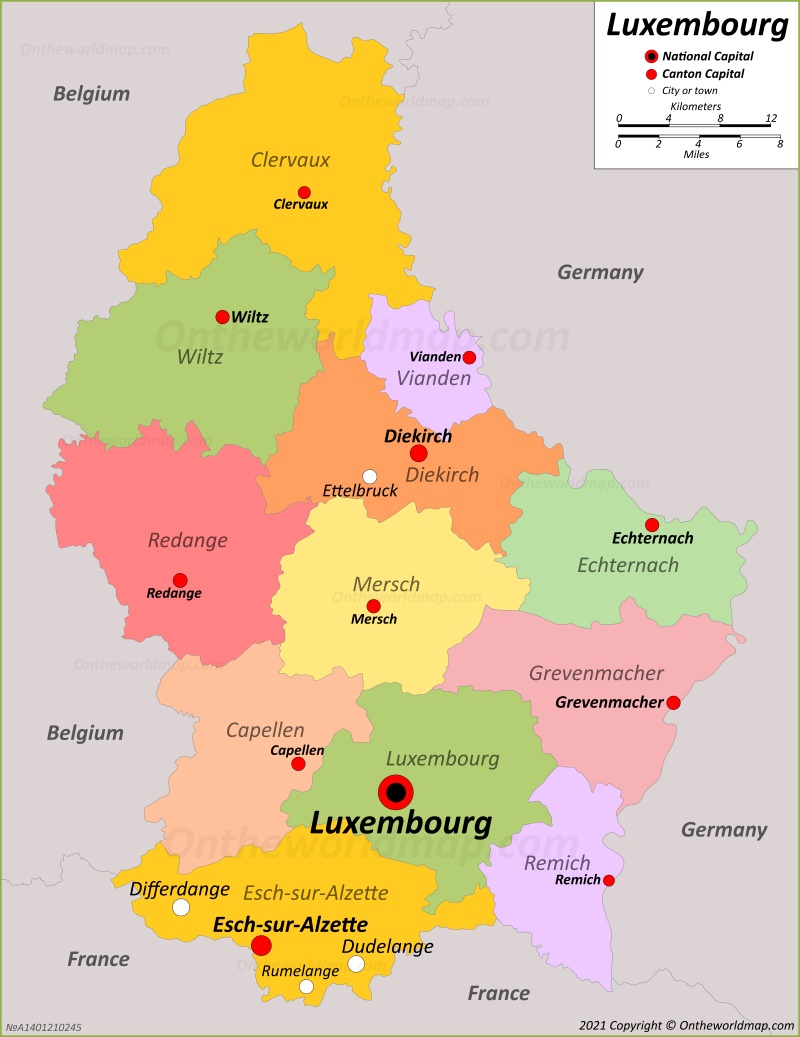
Description:
This map shows governmental boundaries of countries; cantons, canton capital cities, major cities and towns in Luxembourg.
Size: 800x1037px / 185 Kb
Author: Ontheworldmap.com
You may download, print or use the above map for educational, personal and non-commercial purposes. Attribution is required. For any website, blog, scientific research or e-book, you must place a hyperlink (to this page) with an attribution next to the image used.
Online Map of Luxembourg
Detailed Maps of Luxembourg
About Luxembourg
Luxembourg, a small landlocked country in Western Europe, is bordered by Belgium to the west and north, Germany to the east, and France to the south. Despite its modest size, Luxembourg wields considerable influence due to its strategic location and developed economy.
The capital, Luxembourg City, serves as the political and economic center and is home to several European Union institutions, including the European Court of Justice and the European Investment Bank.
Luxembourg City, known for its financial sector, which plays a key role in the country's economy, which relies heavily on banking, finance, and investment funds. The city also has a well-preserved fortress and old quarters recognized as a UNESCO World Heritage Site.
In addition to the capital, important cities include Esch-sur-Alzette, the second largest city known for its industrial base and the Belleval campus of the University of Luxembourg, and Differdange, home to a branch of the University of Miami.
Luxembourg boasts one of the highest GDP per capita in the world, reflecting its thriving economy and high standard of living. The country maintains a stable political environment and a favorable business climate that attracts multinational corporations and fosters innovation.
In addition, Luxembourg has a multilingual population with Luxembourgish, French and German as official languages, facilitating communication and trade within the European Union. Overall, Luxembourg is a key player in European financial and political life, with a dynamic economy and a strategic position at the heart of Europe.
The Facts:
Capital: Luxembourg City.
Area: 998.6 sq mi (2,586 sq km).
Population: ~ 675,000.
Cities and towns: Luxembourg, Esch-sur-Alzette, Differdange, Dudelange, Pétange, Sanem, Hesperange, Bettembourg, Schifflange, Käerjeng.
Official language: Luxembourgish, German, French.
Currency: Euro (€) (EUR).
Geography of Luxembourg
Luxembourg, a landlocked country in Western Europe, has two main geographical regions: the Oesling in the north and Gutland in the south. Oesling, part of the Ardennes, consists of rugged hills and dense forests, while Gutland is fertile plains and rolling hills.
Luxembourg has a temperate maritime climate characterized by mild winters and cool summers, with moderate rainfall throughout the year.
The varied topography supports different ecosystems and contributes to the country's agricultural productivity. The Moselle River, which flows along the southeastern border, promotes viticulture in the region, producing noteworthy wines. Overall, Luxembourg's geography supports both natural beauty and agricultural activity.
Brief History of Luxembourg
Luxembourg's history reflects its strategic position in Europe, influencing its development and political alliances. Founded in 963 by Siegfried, Count of Ardennes, Luxembourg began as a fortified castle. Over the centuries, it came under the control of various European powers, including the Burgundians, Habsburgs, and French.
In 1815, the Congress of Vienna established Luxembourg as a Grand Duchy under personal union with the Netherlands. The Treaty of London in 1839 confirmed its independence by ceding part of its territory to Belgium. Luxembourg's neutrality ended during World War II when it was occupied by Germany.
After the war, Luxembourg became a founding member of key international organizations including the United Nations, NATO, and the European Union, strengthening its role in world diplomacy.
Maps of Luxembourg
Cities of Luxembourg

